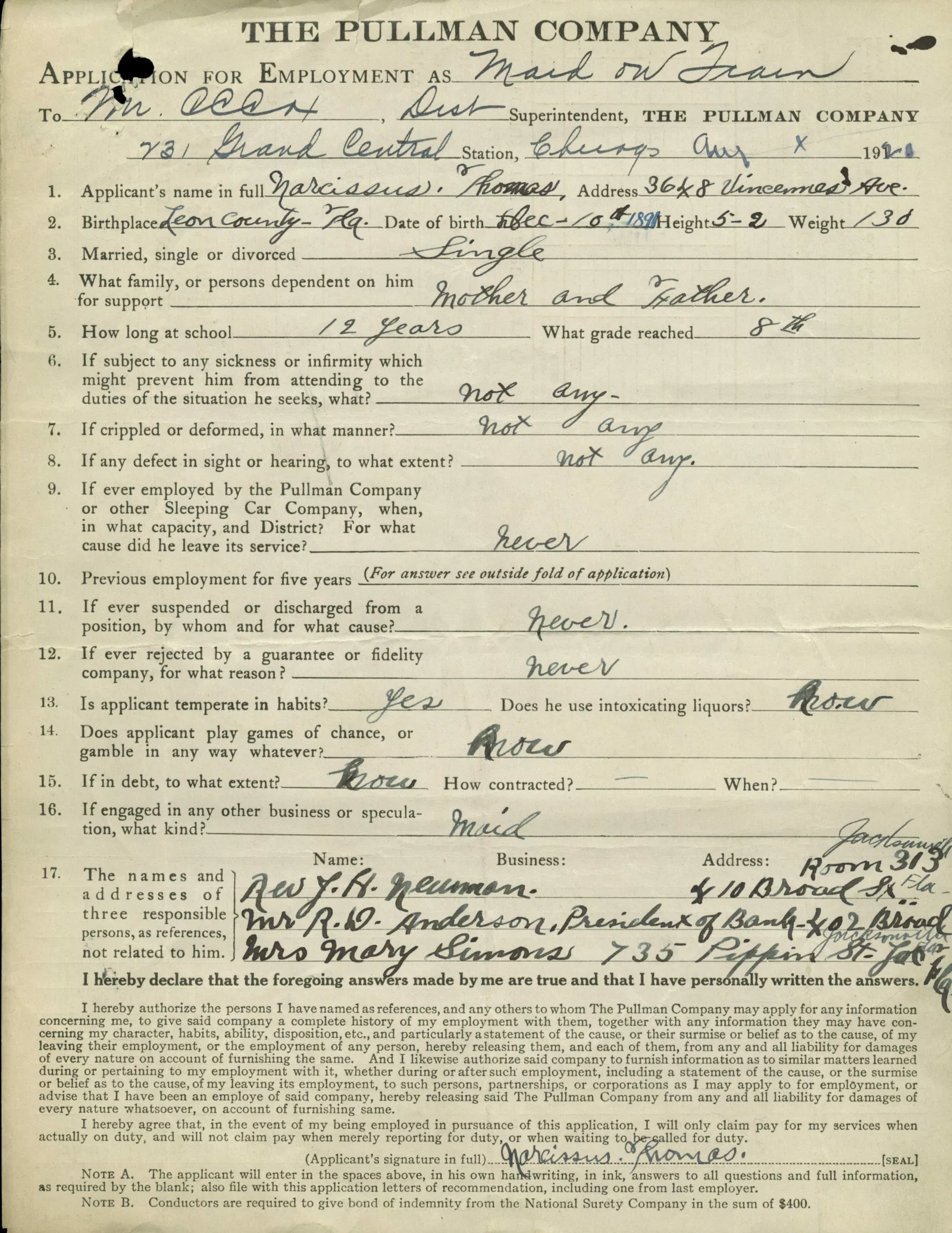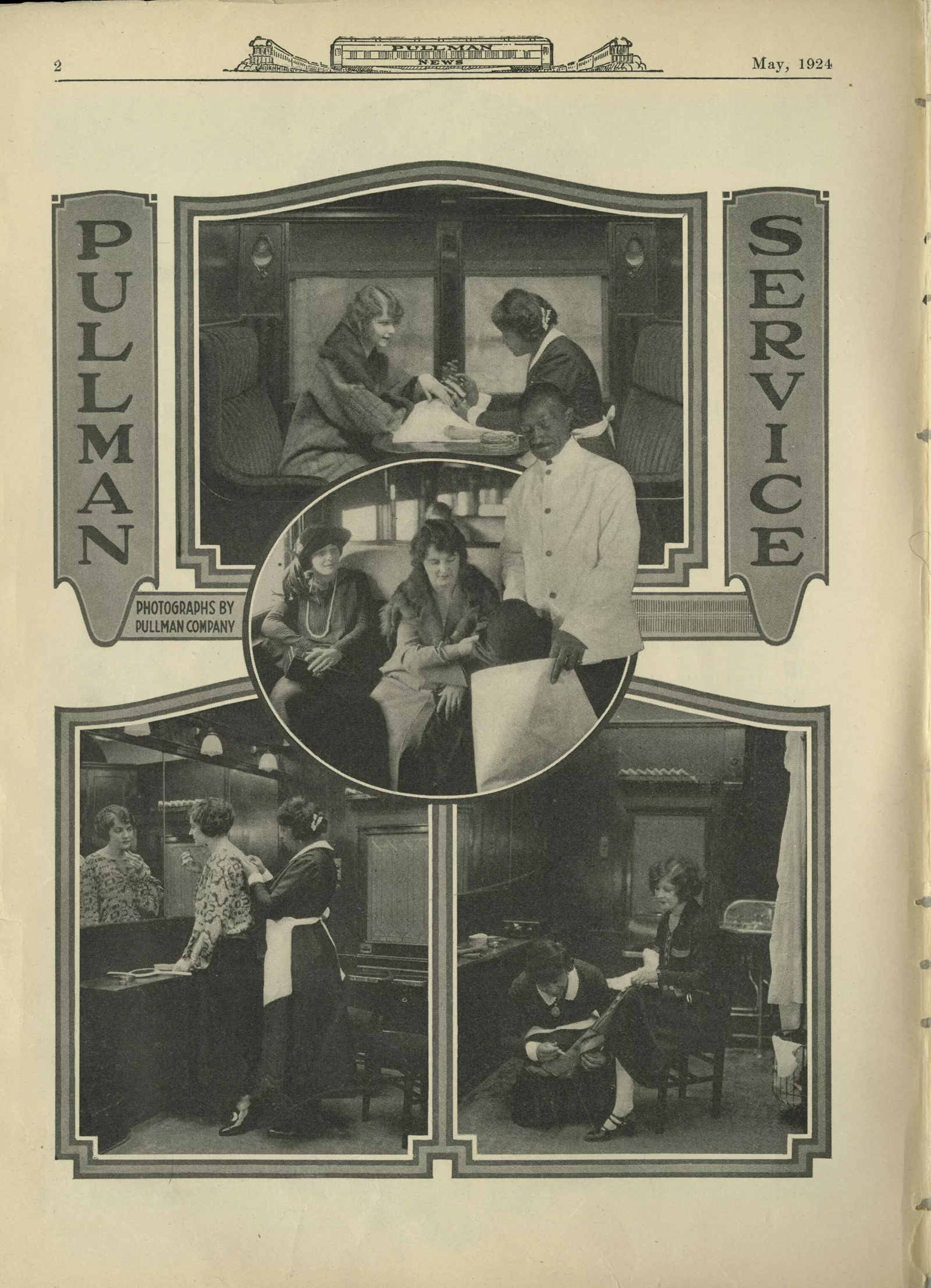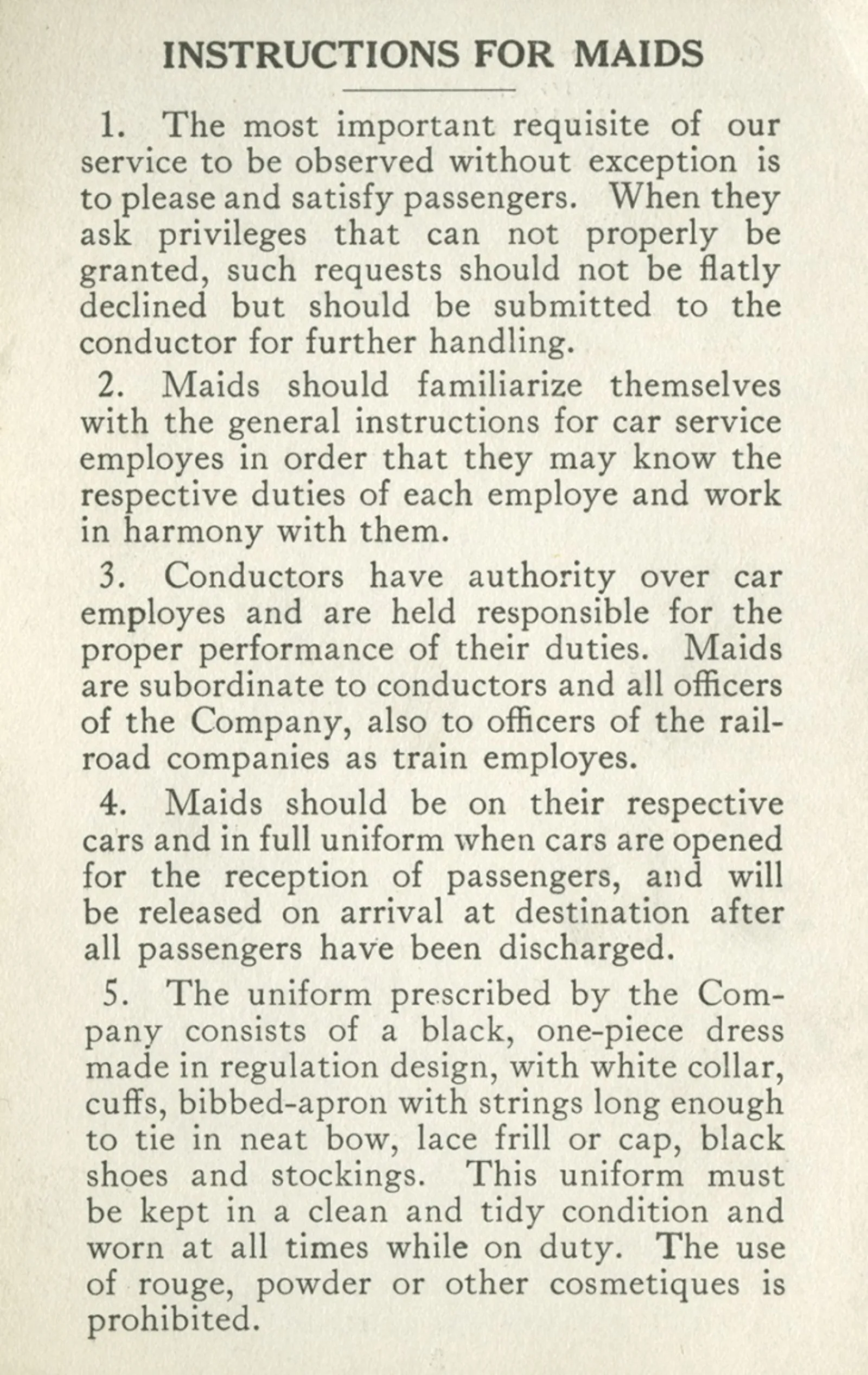As a National Endowment for the Humanities / Lloyd Lewis Fellow in American History at the Newberry Library in 2015, Miriam Thaggert became interested in how African American women have experienced travel on trains. Combing through the library’s Pullman Company Records, she discovered that it wasn’t just Pullman porters who negotiated complex power dynamics on the rails; Pullman maids also reckoned with the social mores of class, race, and gender aboard the company’s famous sleeping cars.
Thaggert, an Associate Professor of English at the University of Buffalo, drew on her research at the Newberry to write her new book, Riding Jane Crow (University of Illinois Press, 2022). The book explores how the experiences of African American women travelers challenge the narratives of freedom and progress traditionally associated with trains. Thaggert also has curated a new exhibition, Handmaidens for Travelers, on view June 3 through September 16 in the Newberry’s Helen M. Hanson Gallery.
We interviewed Thaggert about her research and the significance of telling the stories of the Pullman Company maids.
How did you first become interested in the Pullman Company and the women who worked as maids for the railroad?
Riding Jane Crow began at the Newberry. I was looking for first-person stories about Pullman porters and came across a file that had the application of a woman applying to be a Pullman Company maid. I remember the moment so clearly because I literally stopped and asked myself: “The Pullman Company had maids?” I was surprised that I’d never heard of Pullman maids. I didn’t even know the position existed. I became really curious about what the maids’ experiences were like and that led me to raise other questions about Black women on the railroad and their perspectives of the American train: Did their experiences match the familiar narratives we tell about the train in American culture? How did their race and gender impact the way they were treated? One question led to another, and Riding Jane Crow is my way to answer some of these questions.
What are the common narratives about the train in American culture? How do the experiences of Pullman maids either support or contradict those narratives?
In the United States, the train is a symbol of American ingenuity and progress, a sign of technological dominance. The Pullman compartment can be seen as a form of American progress—it improved the long-distance traveler’s train ride experience. Similarly, the presence of Pullman porters and maids offered a feeling of enhanced leisure for the white Pullman passenger. Questions I ask in my book include: How does our understanding of the Pullman compartment space change when the experience of the maid is the center of the discussion? How does the Pullman car appear when the site of travel leisure is based upon the Black woman’s labor? My research suggests that there were advantages and disadvantages to working as a maid on the Pullman car. On the one hand, it was a comparatively privileged occupation, much as it was for the porters. But there were challenges to being the only Black female Pullman employee within that space. Maids were accused of theft when passenger items went missing, for example; and, in the book, I briefly discuss an episode of harassment a maid experienced from a white conductor.

Why is it important to tell the stories of Pullman maids?
The stories about the Pullman porters have in some ways overshadowed the stories about the maids. This happened for a number of reasons, as I point out in Riding Jane Crow. There have always been more porters than maids in the Pullman Company, and the porters’ fight for better working conditions were usually framed in terms of “manhood rights.” But it’s important to know the maids’ experiences because the maids offer a unique perspective on that history and on African American labor.
You’re encountering personal information about these women in their employee records. How do you think about the balance between respecting their privacy and telling their stories?
That is a very important question for me, and one that I was undecided about for a very long time. I wanted to let more people know about these women but how do I do that without exploiting their stories, their history? In order to get the full impact of the maids’ experiences, it would be necessary to tell certain stories about who they were and what their interactions with Pullman supervisors and Pullman passengers were like. But how do I do that respectfully, ethically? In the end, with the help of Newberry staff, I worked hard to ensure that very deeply private information was not disclosed in the exhibition.

As you were doing research for the exhibition, did you find or learn anything that surprised you or challenged your expectations?
I assumed that most of the maids would have been unmarried young adult women. In fact, the employee cards for the maids indicate that many of the maids were or had been married, and some maids worked well until they were middle aged. While conducting my research, I was also surprised to learn that the Pullman Company had Asian American maids, primarily on the western train lines. Unfortunately, I did not locate a lot of info about these maids in my Newberry research.
What has been your approach to curating the exhibition? Were there any special storytelling tactics you had to adopt while shaping the content into an exhibition, as opposed to the book?
One important consideration was conservation—how fragile or how sturdy were the documents I wanted to use? The question about privacy was also raised. As a literature scholar, I’ve long been interested in narrative and how different narratives work. An exhibition requires strong visual skills, it requires telling a compelling historical narrative with primary documents and images. It was an exciting opportunity, and I loved it. I have to give my deep thanks to the Newberry’s archival, conservation, and exhibition teams.

What do you hope visitors learn from the exhibition?
I hope that both the people who already know about the maids and those who are learning about the maids for the first time will be able to find something surprising and engaging. I hope the exhibit encourages visitors to rethink their assumptions about train workers, their assumptions about the Pullman porter experience. As I mention in my book, the well-known Pullman porter narrative has its own sort of mobility in American and African American labor history. The story of the Pullman maid offers a different perspective on that familiar story.
Other exhibits dealing with the railroad may focus on the technology of the locomotive—the technological achievements that enabled the train to become such a dominant mode of transportation in the United States. I’m more interested in the social and the personal, the human aspect of working within or near the American train compartment. How did African American women workers navigate an enclosed space such as the Pullman car, a space that is simultaneously public and private? I hope the exhibition demonstrates that more human, personal element of train travel, as well as the Pullman compartment as a workspace for African American women.
